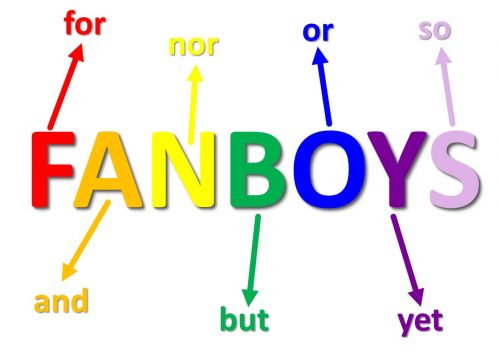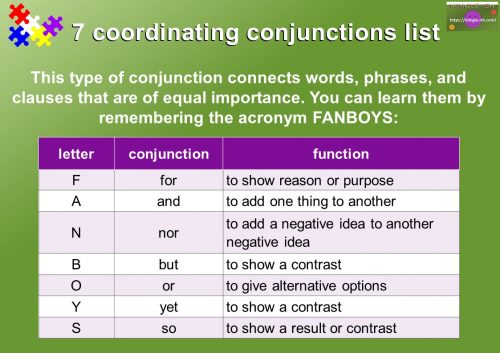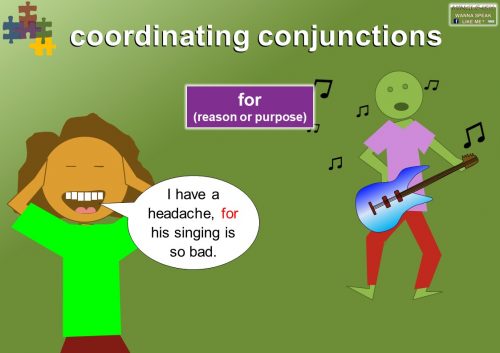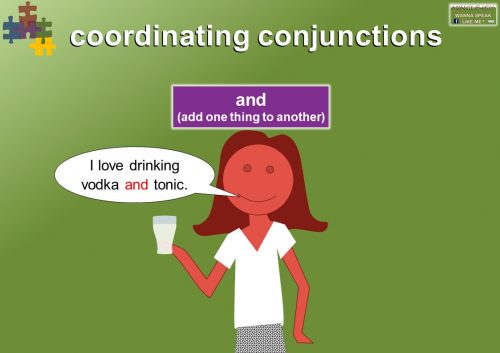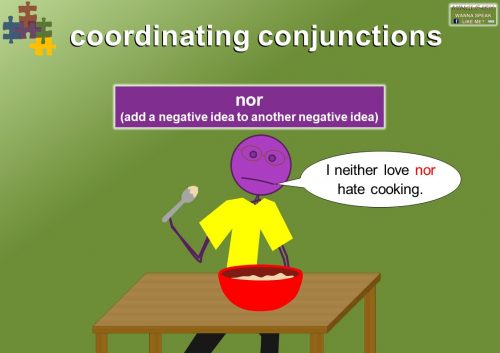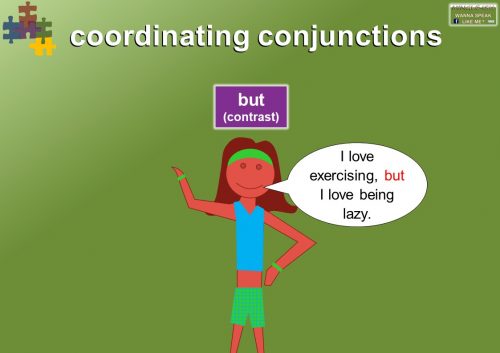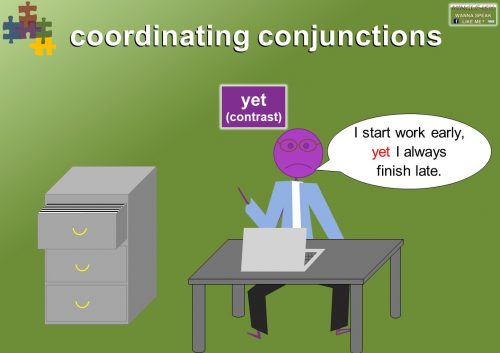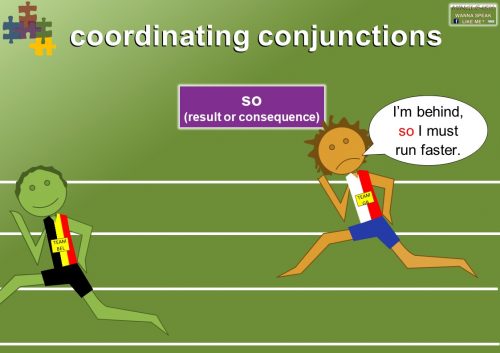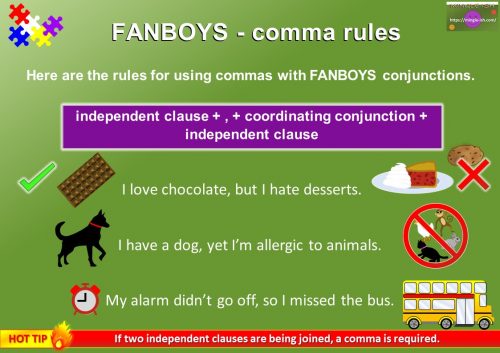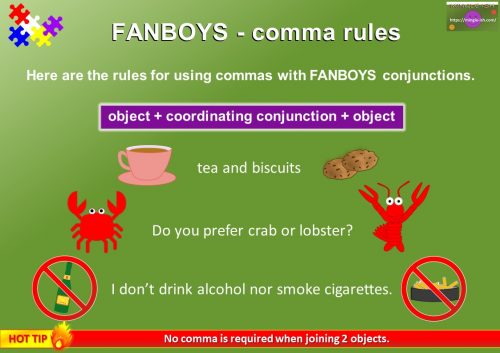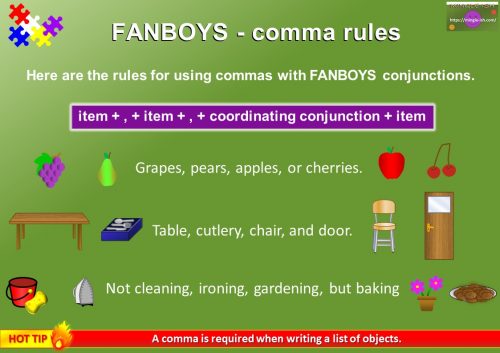Contents
You may or may not know, but there are 3 types of conjunctions. First on the conjunction list is FANBOYS (coordinating) conjunctions. This type of conjunction connects words, phrases, and clauses that are of equal importance. There are seven conjunctions for you to remember and they can easily be remembered by learning the acronym ‘FANBOYS’,
Take a look at the picture below to see what FANBOYS stands for.
function and examples of coordinating conjunctions
Each coordinating conjunction serves a purpose and some are more commonly used than others. Let’s have a look at their functions:
- For – reason or purpose
- And – add one thing to another
- Nor – add a negative idea to another negative idea
- But – contrast
- Or – alternative
- Yet – contrast
- So – result or consequence
coordinating conjunctions examples
Let’s take a look at some examples of FANBOYS conjunctions with pictures.
for
is used for a reason or purpose
example – I have a headache, for his singing is so bad.
and
is used add one thing to another
example – I love drinking vodka and tonic.
nor
is used add a negative idea to another negative idea
example – I neither love nor hate cooking.
but
is used to contrast
example – I love exercising, but I love being lazy.
or
is used as an alternative
example – Shall we go for a swim or sunbathe?
yet
is used to show contrast
example – I start work early, yet I always finish late.
yet
is used to show a result or a consequence
example – I’m behind, so I must run faster.
FANBOYS comma rules in grammar
When using a coordinating conjunction, you are joining various words, phrases, and clauses. This can sometimes mean using a comma. The good news is that there are a set of grammar rules we can follow which tells us if we need a comma or not.
They are important when writing. If you want to learn more about comma rules and other punctuation marks click here.
if two independent clauses are being joined, a comma is required
The structure goes like this:
independent clause + , + coordinating conjunction + independent clause
examples –
- I love chocolate, but I hate desserts
- I have a dog, yet I’m allergic to animals.
- My alarm didn’t go off, so I missed the bus.
no comma is required when joining 2 objects
The structure goes like this:
object + coordinating conjunction + object
examples –
- tea and biscuits
- Do you prefer crab or lobster?
- I don’t drink alcohol nor smoke cigarettes.
a comma is required when writing a list of objects
The structure goes like this:
item + , + item + , + coordinating conjunction + item
examples –
- Grapes, pears, apples, or cherries.
- Table, cutlery, chair, and door.
- Not cleaning, ironing, gardening, but baking.
So, you now know how to spot a coordinating conjunction. Believe it of not, these are in fact the easiest of the three. The other two are a little more difficult. When you’re ready, move on to the next conjunction.
